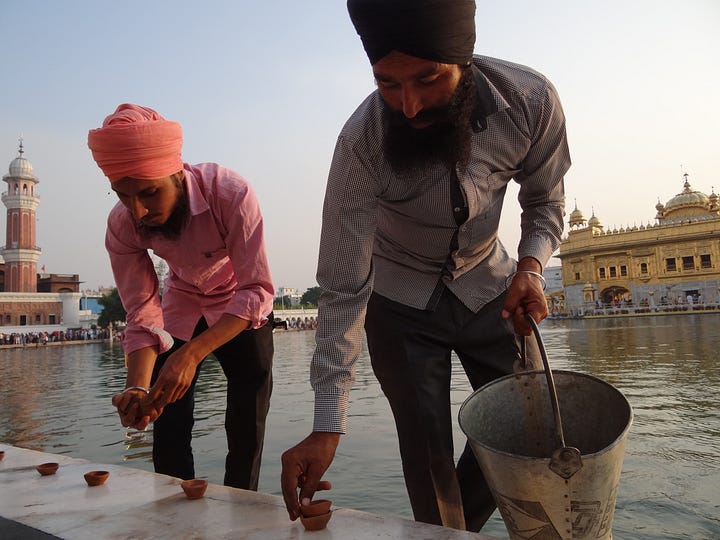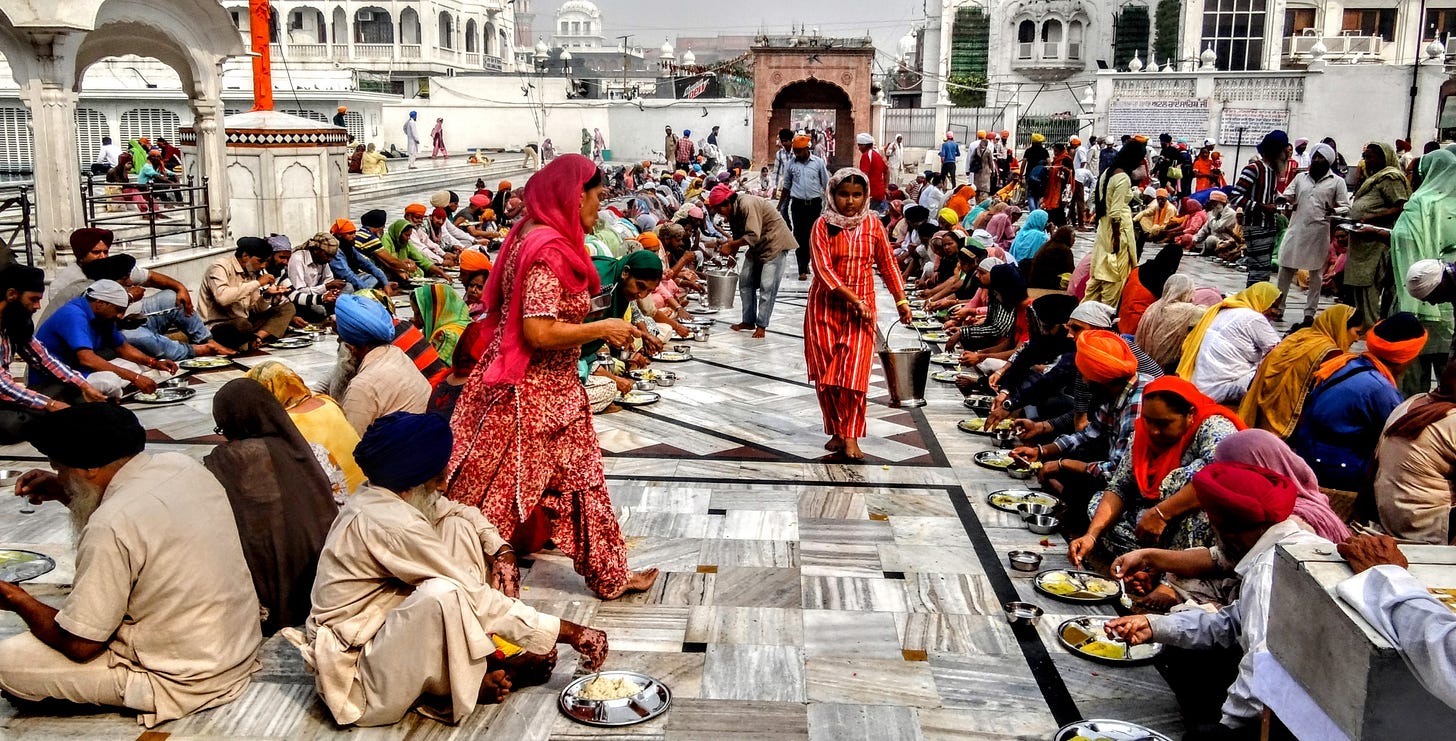A Beacon of Generosity: The Golden Temple's Langar, the Largest Community Kitchen Globally
Celebrating Diwali at the Golden Temple, the world's largest community kitchen serving 500,000 free meals daily, embodying Sikh values dating back to the 1500s
📍Amritsar, India
Happy Diwali from the Golden Temple, the most significant spiritual site in Sikhism, an Indian religion and philosophy with the fifth highest number of adherents among organized faiths worldwide. During Diwali, Indians light over 55 million candles, and one of the grandest celebrations of the festival of lights takes place in the Sikh heartland of Amritsar. Generosity is a core value in Sikhism, and they practice what they preach. The Golden Temple's kitchen serves up to 100,000 free meals per day, and during Diwali, this number reaches four to five times that amount, making it the world's largest community kitchen.
Originally completed in the late 1500s, the Golden Temple has endured a history of destruction and rebuilding, from Mughal and Afghan invasions to the turmoil of 1984's conflict between Sikh separatists and the Indian government, resulting in numerous deaths. Despite this tumultuous past, the gurdwara (Sikh assembly and worship place) continues to showcase extraordinary generosity, offering free daily meals to tens of thousands, promoting equality and compassion.
The Golden Temple complex features various structures around a pool and a golden sanctum, with the langar (dining hall) being the largest. In the langar, Sikh hospitality ensures every diner is treated with equality, seated together and feasting as equals. The standard meal includes a hearty platter of lentils, a vegetable main course, kheer (rice pudding), bread, and pickles, with seconds encouraged.
Operational 24/7, the langar, run by volunteers known as sewadars, serves a full vegetarian meal to all visitors, irrespective of faith, gender, or socioeconomic background. This inclusivity is particularly significant in a country with a deeply rooted caste system.
While charitable feeding has roots in Indian and Sufi-Muslim traditions, Sikh langars distinguish themselves by being open to all, transcending religious and social boundaries. Since the religion's establishment in the 1500s, Sikh community kitchens, including the Golden Temple's langar, have been true institutions of charity and equality.
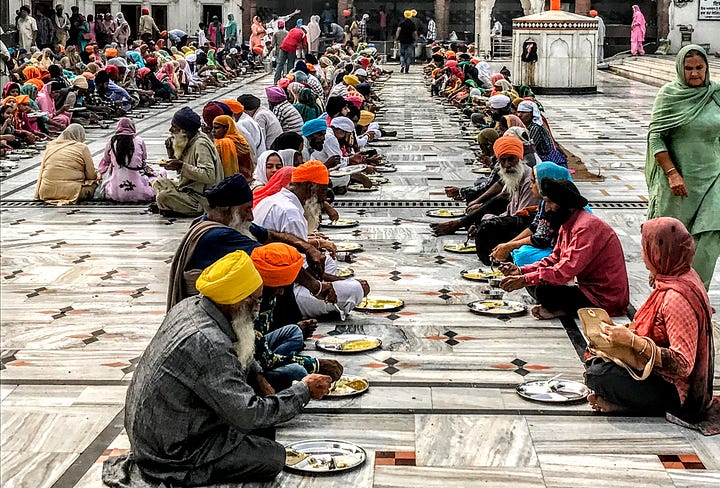

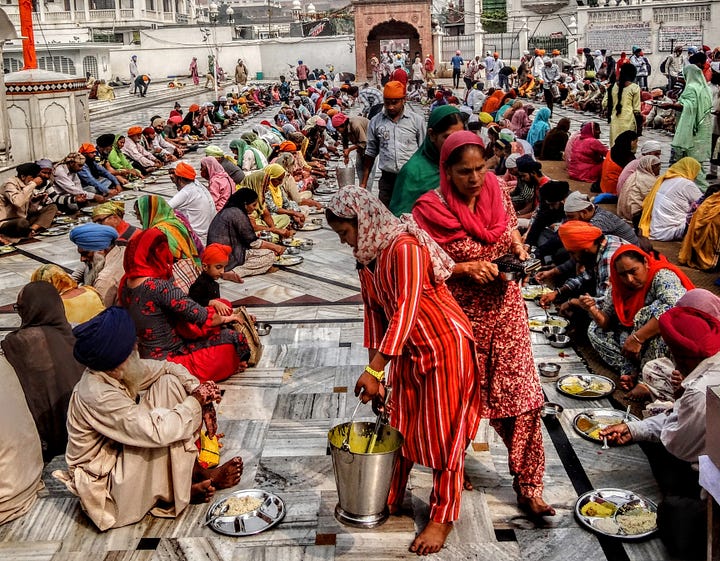
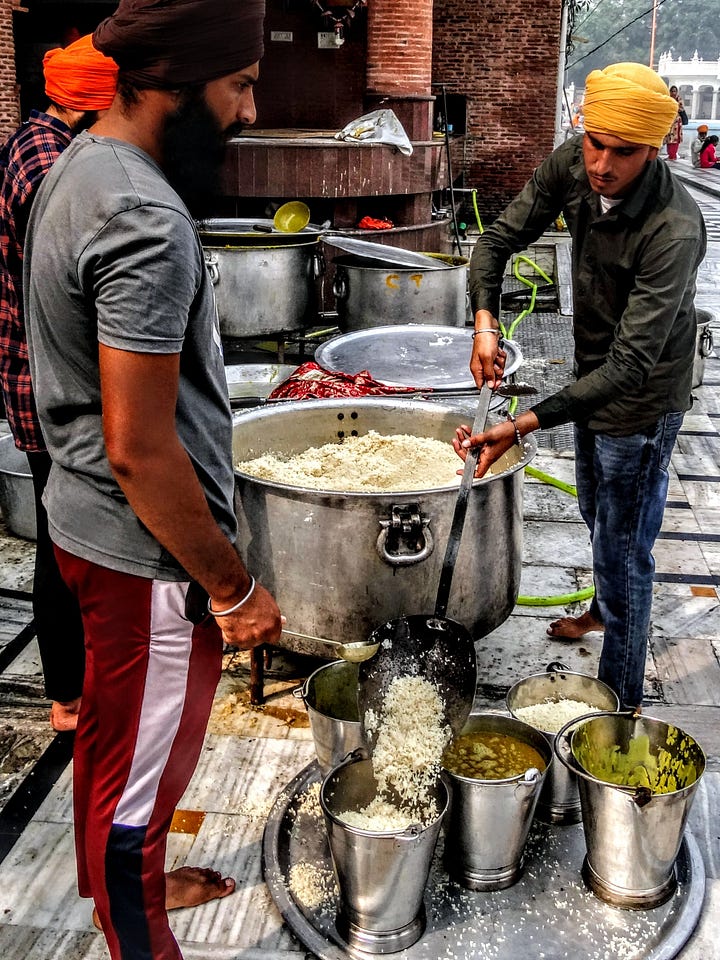
The langar operates continuously, with a brief half-hour break from 4:30 to 5:00 AM. Over 100 large metal vats simultaneously cook most menu items, each sizable enough to feed an entire village. The only exception to large-batch preparation is the bread (chapati), which requires individual rolling before baking. The daal (yellow lentil stew) alone, a secondary dish, demands 400 kilograms of onions, 100 kilograms of spices, and substantial quantities of lentils daily. Despite relying entirely on volunteer labor, the kitchen incurs an annual cost of over $4 million to operate.
As night falls, the gilded shrine of the gurdwara, adorned with 750 kilograms of gold, casts a shimmering reflection in the surrounding pool. This visual spectacle enhances the Golden Temple's appeal, creating an ideal backdrop for the Indian festival of lights. Beyond its visual splendor, the gurdwara embodies the essence of Diwali, celebrating light triumphing over darkness. Nowhere else exemplifies the message of Diwali more sincerely than the community kitchen, radiating a spiritual light through the largest act of altruism of its kind worldwide during the festival.



